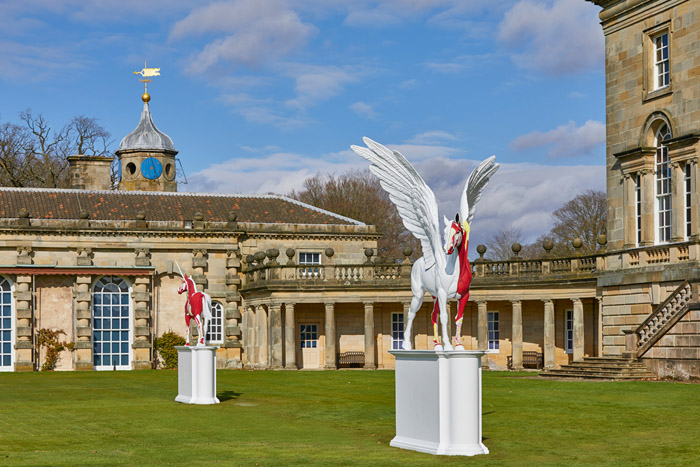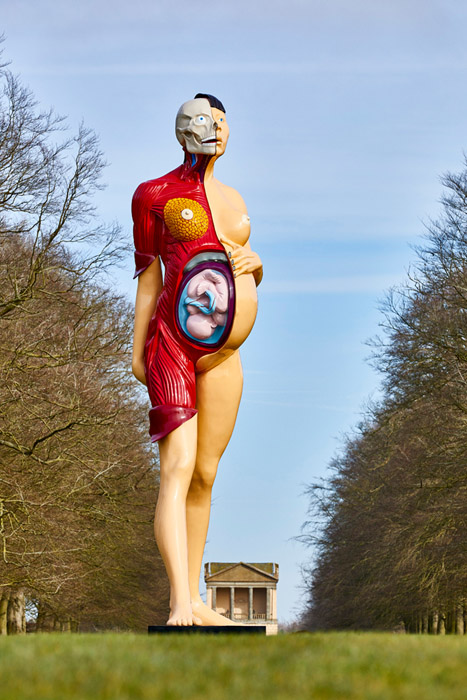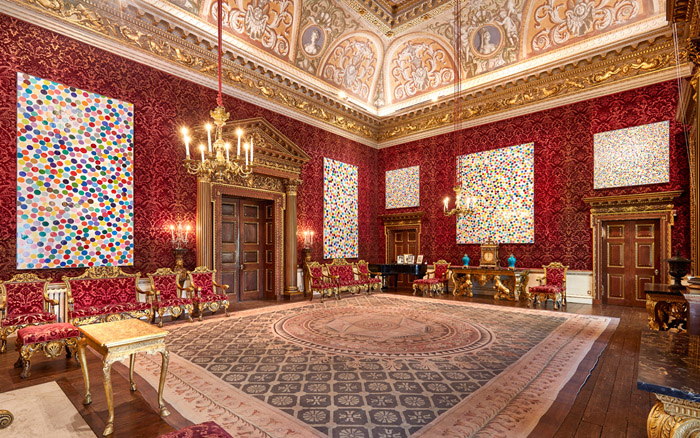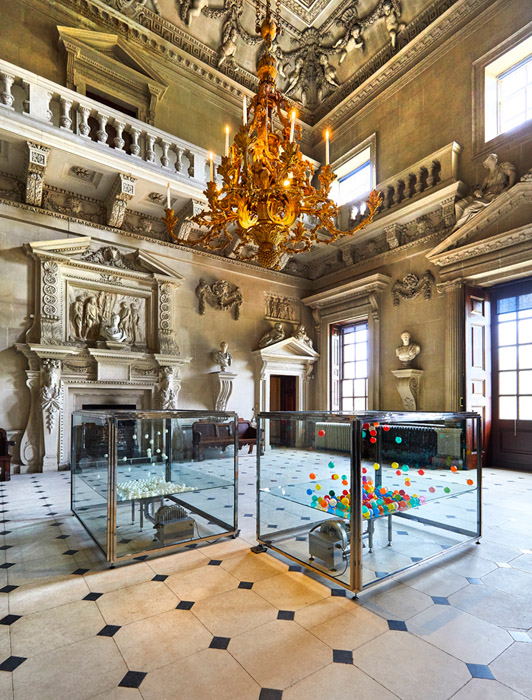
Photo by Pete Huggins
The first Damien Hirst piece, Sensation, is encountred while driving to the carpark. From the car it look looks like something from an amusement park or fun fair. Looking like brightly coloured plastic. On closer inspection, it appears to be a magnification of a section of skin complete with hairs.
This concept is carried through several works. Myth (unicorn) and Legend (Pegasus) are built with clean precision but at the same time highly stylised. The ‘outer skin’ is painted white, a stark contrast to areas where the skin is ‘peeled away’ to reveal the insides horrifyingly red with touches of pink and yellow.

Photo by Pete Huggins
The same graphic depiction of this scientific disecting into parts of the figures is seen in the oversized torso Temple and the massively grotesque The Virgin Mother. In the gift shop, you can recognise the same general feel in the type of anatomy books which inspired Hirst.
The monochrome works may be subtle as far as colour goes but definitely not in content. Anatomy of an Angel in Cararra marble, carved with mechanical precision exposes sections of the anatomy to the bone. Wretched War – The Dream is Dead in silver shows a decapitated pregnant woman with baby exposed in the womb as already seen in The Virgin Mother. Saint Bartholomew, Exquisite Pain in black is poignant at first glance but the use of scalpel and tailor’s scissors give an unexpected twist on a theme already blatantly conveyed by Marco d’Agrate in 1562.
Also on the grounds are Charity the oversized replica of a collection box in the shape of a sweet girl with a leg brace has been ripped open with a crowbar, coins strewn on the ground and The Hat Makes the Man after Max Ernst’s collage of 1920.
In the house, all Walpole and Cholmondeley family portraits were removed from the stately rooms of Houghton Hall and replaced with Hirst’s Colour Space painings. A total of 46 paintings are being displayed for the first time at Houghton. We were told by the guides that these were selected from the 300 paintings in the series made with the help of assistants.

Photo by Pete Huggins
The red walls of the Saloon provides an excellent backdrop for the first 8 paintings on display. What is striking about the paintings is the complete contrast to the sculptures outdoors. The dots are happy. They are taken out of the rigid grid of the earlier Spot paintings. They interact. They make you smile.
Hirst says of his work: “I originally wanted the spots to look like they were painted by a human trying to paint like a machine. Colour Space is going back to the human element, so instead you have the fallibility of the human hand in the drips and inconsistencies. There are still no two exact colours that repeat in each painting, which is really important to me. I think of them as cells under a microscope. It felt right to show them somewhere historic rather than in a conventional gallery space and Houghton’s perfect. It feels totally right.”

Photo by Pete Huggins
Space, Time, Form, Matter, Substance, Change and Motion and Observe, Identify, Reason, Analyse, Measure, Modify and Reproduce are a kinetic translation of the spots into three dimensions. The balls dance randomly through the box for the 5 minutes when air is blown through. Then they rest and then the cycle begins again.
One of the many very helpful guides told me, “There is one thing about this exhibition, everyone is smiling. Some because they think it’s a joke and others because they really love the work.”
It’s well worth the visit to Houghton Hall to make up your own mind. The exhibition runs until 18 July. The outdoor sculptures will remain until September.
Visit the Houghton Hall website for more informaiton and booking.
All images ©Damien Hirst and Science Ltd. All Rights Reserved, DACS 2018
